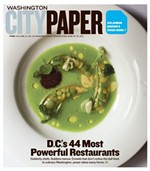Courting Rituals
Growing up in the projects of Coney Island, Sebastian Telfair was groomed to be a basketball star in the way that dauphins were groomed to be kings. His older brother, Jamel Thomas, was a top player at Providence College. His cousin Stephon Marbury made it all the way to the NBA. Once it became clear that Telfair himself was a prodigiously talented point guard, there was no stopping the forces of dynasty-making: He’d reach the top or die trying.
Through the Fire, the first big-screen project by Jonathan Hock, producer of ESPN’s Streetball: The AND1 Mix Tape Tour, follows Telfair in his final year at Brooklyn’s Lincoln High School, where he’s poised to lead his team to an unprecedented third straight city championship and become the all-time top scorer in New York’s Public Schools Athletic League. Recruiters are stalking him at every game, Sports Illustrated has put him on its cover, and though University of Louisville coach Rick Pitino has offered him a place on next year’s squad, word has it that Telfair may end up skipping college and heading straight for the pros, just like LeBron James before him.
But this is, after all, a basketball doc, and with the NBA draft fast approaching, Telfair’s aura of destiny begins to dim. Critics say he’s not large enough for the big time or that he doesn’t put enough points on the board. His jump shots are starting to miss, his confidence is ebbing, and it’s no longer clear if he’ll make it to the NBA or, like his brother, fade into painful obscurity. How painful? At the time of filming, Thomas is living out that most ignominious of pro-ball banishments: playing overseas, in his case for Greece’s Apollon Patras.
Telfair is still something in the thick of competition, though, and so is Through the Fire. Hock trains his cameras right under the baskets, giving us not only an impressive selection of the moves for which Telfair is justly celebrated, but also every bead of flying sweat and all the profanities that TV leaves out. We feel what it’s like to be on that floor, waging war. And Hock’s familiarity with the proving grounds of New York renders him an invaluable guide to the basketball nurseries that spawn these players.
Where Hock disappoints is in trying to squeeze Telfair’s story into the classic dramatic arc of underprivileged kid chasing improbable dream. None of his “characters” quite fill their appointed roles. Thomas, for instance, though punctually trotted out as one of the losers in fame’s lottery, is still a dazzling athlete—and the most mature individual on view. More important, Telfair, far from being the green young hopeful that archetype would demand, is a cunning media manipulator. Whether recycling sports platitudes for interviewers, holding forth at press conferences, or pressing flesh with celebrity rappers and corporate sponsors, he accepts every attention that comes his way with a staggering poise. He understands as well as anybody that he’s a commodity in a terrifying business.
Hock’s film understands that, too, at least some of the time. One observer likens Telfair to Tiger Woods: “Clean. Happy. Smiling all the time. Nice teeth.” And in a moment of barely encoded racism, an Adidas executive lauds him for his “instant street credibility.” What we never get is a rigorous accounting of the Faustian exchanges a young star athlete has to make on the way to an NBA contract. Who, for instance, bought Telfair the car he’s driving at the beginning of the movie? Where are the agents and publicists who brokered his SI cover and his multimillion-dollar shoe contract? And where will any of them be in the event that he fails?
Through the Fire is being anointed as a successor to Hoop Dreams, but Steve James’ 1994 classic had the capacity to imagine a world of achievement outside sports—one of its most memorable moments came when Arthur Agee’s mother passed a professional exam. The only life that Hock offers is filtered through the worldview of, well, ESPN—and not just because the director’s regular employer owns the movie’s television and theatrical rights. No one in front of or behind the camera seems able to imagine a better outcome for a young black man from the projects than realizing those dreams of a Bentley and a Rolex and a shoe with his own name on it.
“This is what we want to do for the rest of our lives—play basketball,” Telfair announces early on. It’s understandable that a single-minded athlete of great talent could be unable to imagine doing anything else. But why can’t Jonathan Hock?

